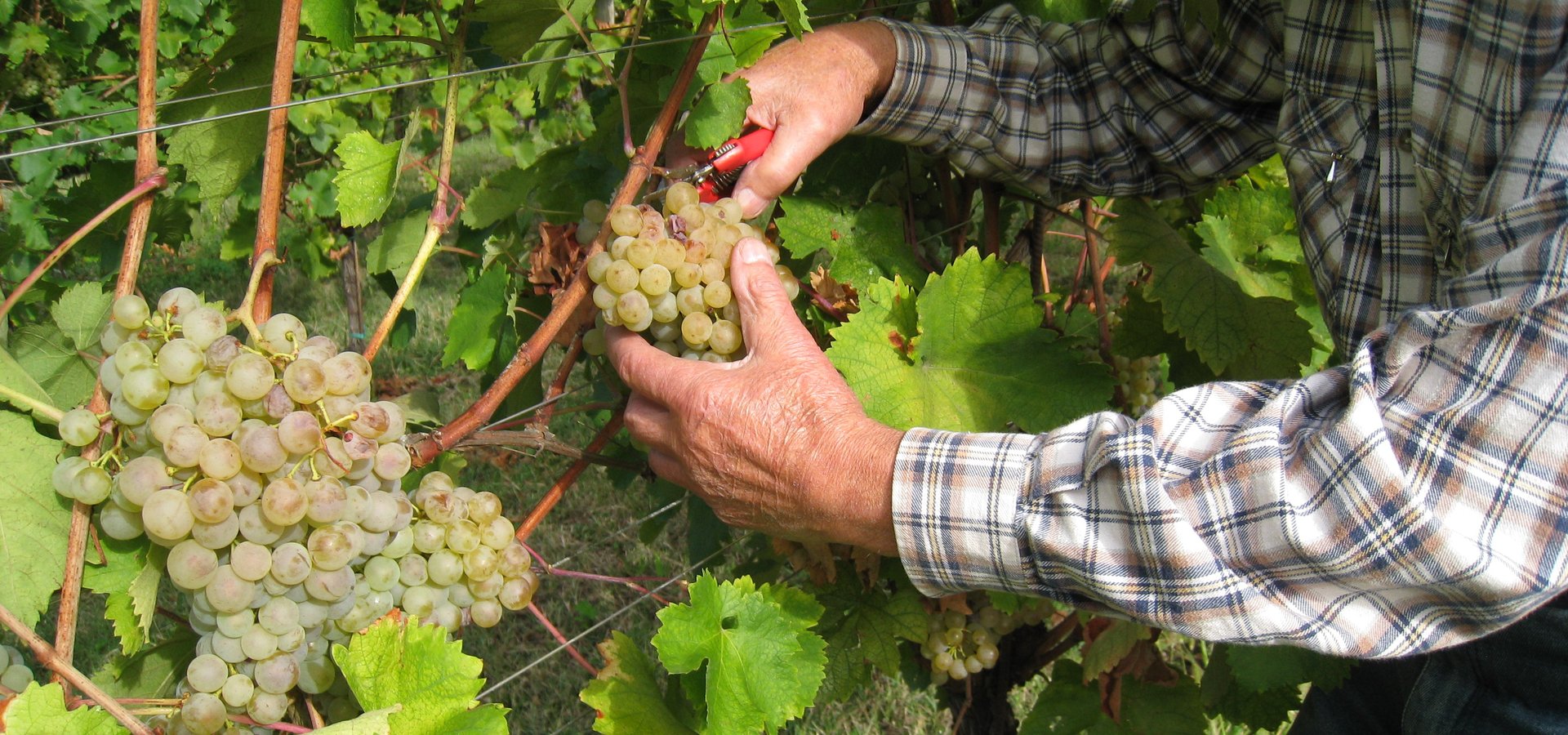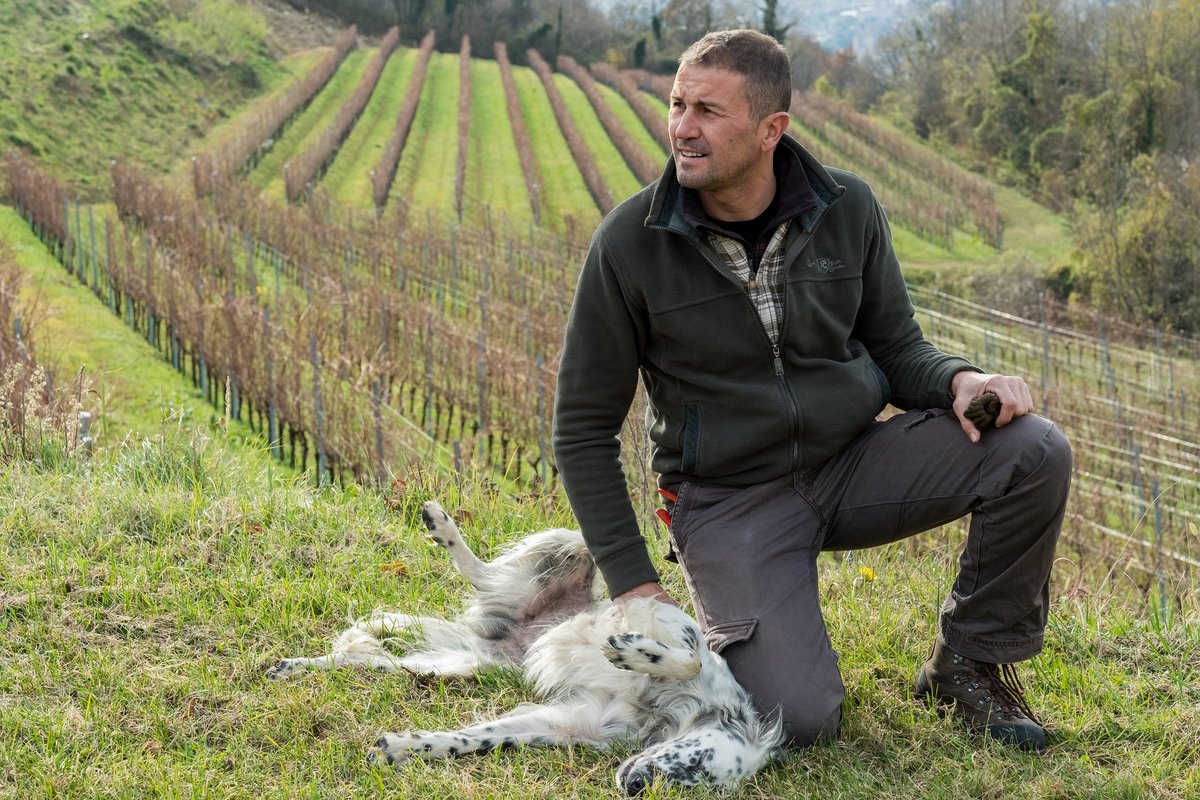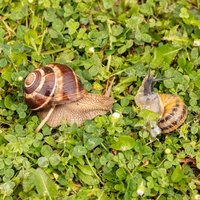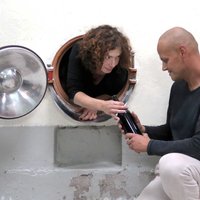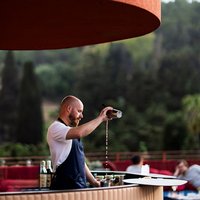The San Maman Estate, nestled in the hills of Valdobbiadene, a UNESCO World Heritage site since 2019, is a true oasis with a landscape adorned by picturesque rows of vines. This rich territory is managed by former professional cyclist Marzio Bruseghin and his family.
Bruseghin, a passionate winemaker with a wealth of experience from his cycling days around the world, chose a Basque word for his sparkling wine bottles: Amets, meaning "dream" in the Basque Country, or Euskadi. Marzio fell in love with the term immediately, making it the label for his dream: lovingly tending to the land where he grew up.
“The estate essentially began in 2002, in what was then a marginal area with a history of livestock farming,” Marzio recalls. “After a few years, we started looking for areas with significant temperature variations, specific types of exposure, and altitude... so why not take advantage of it?”
San Maman stands nearly 400 meters above sea level, and its unique geographic location significantly impacts grape cultivation. Bruseghin explains, “The altitude, balanced by sun exposure, means that cool nights alternate with warm, sunny days. This condition is much more peculiar compared to what you find in the plains. However, it requires some adjustments: you have to set up the vines differently to produce grapes that can yield a high-quality wine.”
But what are the differences between cultivating in the plains versus the hills? The former cyclist responds promptly, saying, “There are various examples, but the first that comes to mind is definitely pruning, which must ensure a lower bud load for the vines so they can develop significant fruit. Another characteristic of the area is a lower humidity percentage.”
Vines are highly sensitive to fungal attacks, and frequent air exchanges around the foliage and the lack of water stagnation around the roots, more common in hilly terrain due to its physical configuration, allow the plants to grow stronger.
There are several strategies to protect the vineyards before it’s too late: “Roses are susceptible to similar diseases as vines, so under the same conditions, if planted at the ends of the rows, they get sick first, highlighting the potential development of certain diseases,” Bruseghin reveals. So, the roses are not just a picturesque aesthetic choice but also act as sentinels for the vineyard.
But how does the magic happen? What wines does the estate offer? “Prosecco is a semi-aromatic wine that, in its simplicity, is very versatile. With various grapes and exposures, we try to differentiate the final product,” says Marzio proudly.
The wines offered are essentially three: Prosecco DOC Extra Dry, suitable both on its own and throughout a meal, made from grapes with a riper, warmer flavor. Its acidity also recalls exotic fruits.
The second offering is Prosecco DOC Brut, ideal for appetizers, characterized by a citrus acidity with a raw apple base: “As a farm, we focused on a brut, and therefore on a dry wine, with a low sugar residue of about 7 grams, trying to offer wines characteristic of the type but not too sweet,” says the former champion.
Third on the list, but not in importance, is Prosecco DOC on the lees, with notes of wildflowers and citrus, notable for its freshness and slightly bitter aftertaste, making it perfect for fish dishes.
San Maman is not just about wine. The synergy between people and animals, especially the donkeys, is essential to the estate. “My donkeys...” says the winemaker affectionately, “are fundamental among the vineyards, always around, serving as a natural cleaning system.”

